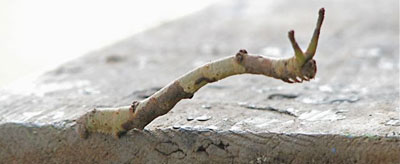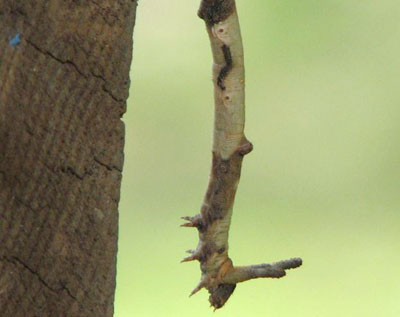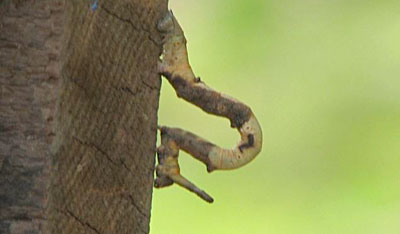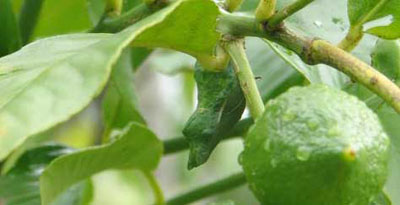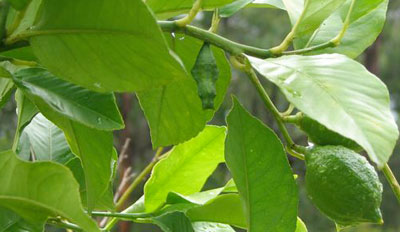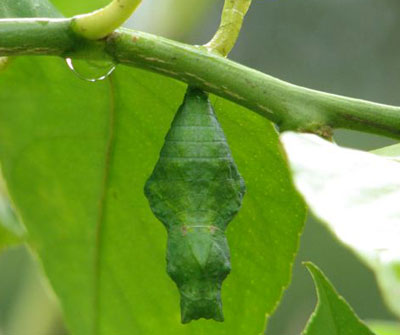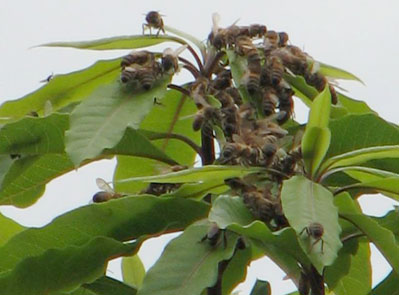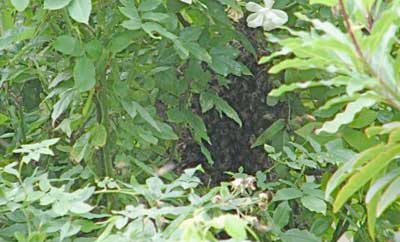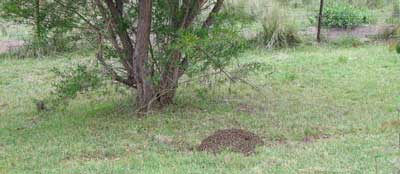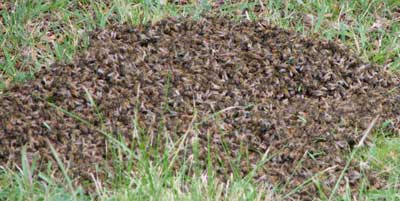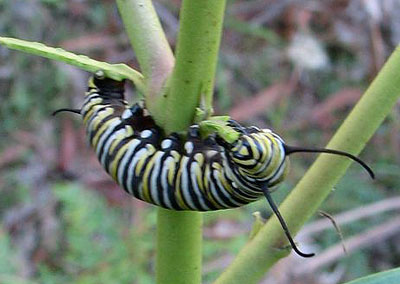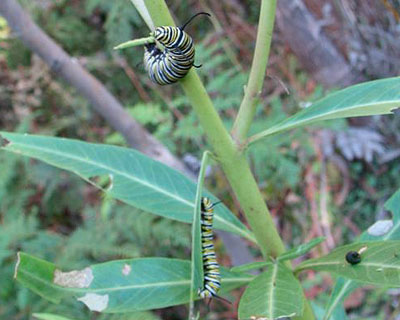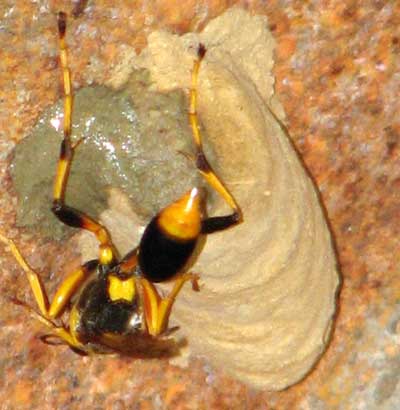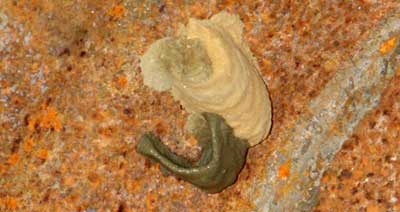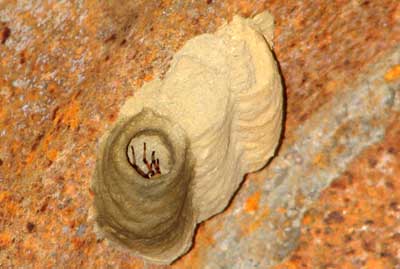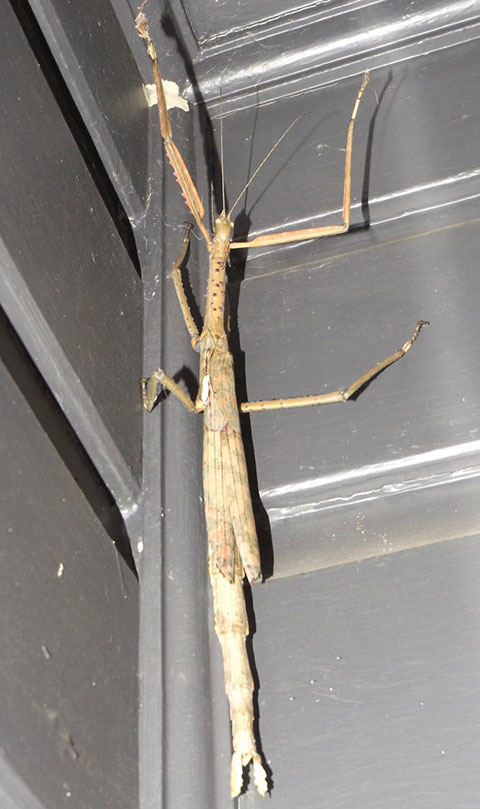
Wildlife seems to find me. This impressive stick-insect right beside my front door was spotted by my son-in-law when he arrived.
I think this is a female Titan Stick-insect, Acrophylla titan.
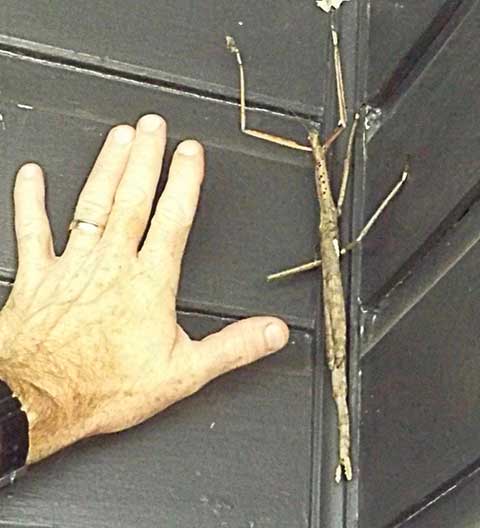
She was easily 300mm long, compared here with her discoverer’s hand.
I was afraid to harm those fragile limbs in trying to dislodge her, but she was not interested in walking on to a twig either.
This stick-insect is from the Phasmatidae family. Six-legged vegetarians, they are often confused with the carnivorous Mantids — as in the Praying Mantis.
As you can see, she’d have superb camouflage on bark or branches, so why she chose to walk away from any trees or shrubs, across a wide timber verandah, and climb up a grey painted weatherboard wall I cannot imagine. She can’t fly — unless ‘she’ is a ‘he’, as the males can, but they are smaller.
Next morning she was gone, nowhere in sight. A mysterious visit by an example of amazing Nature!
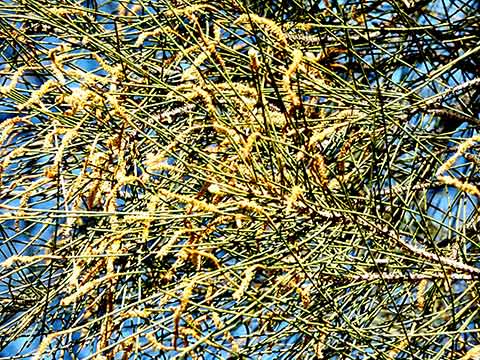
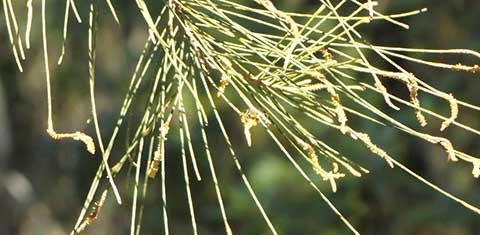
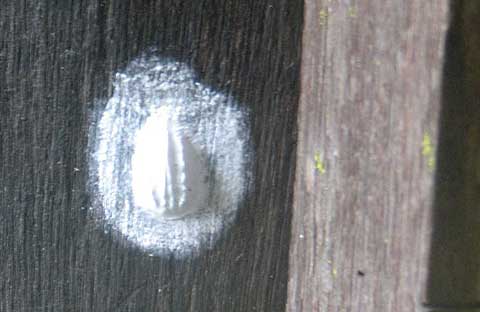
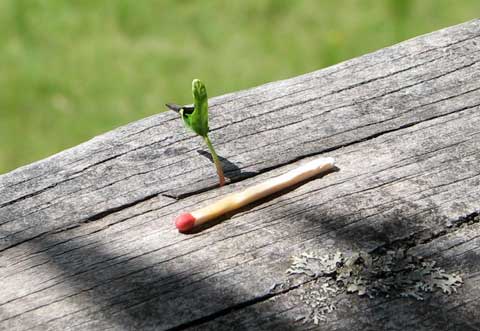
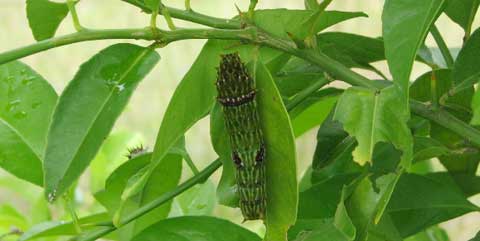
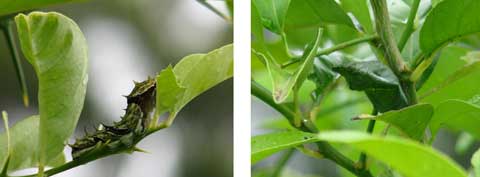
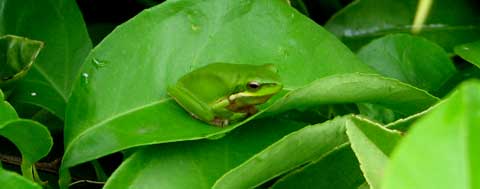
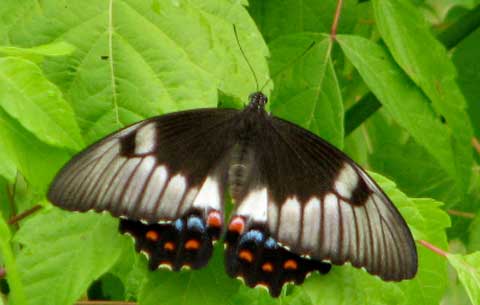
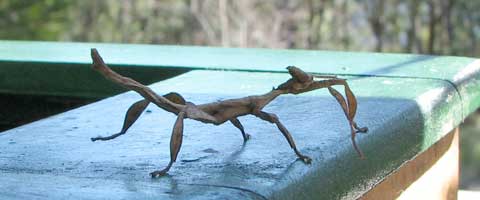
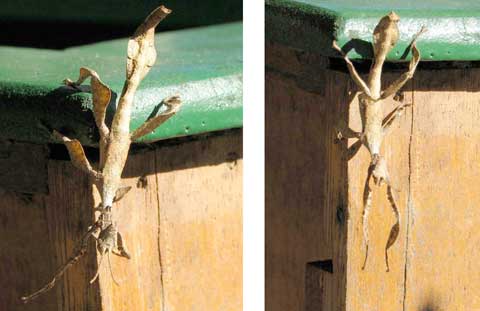
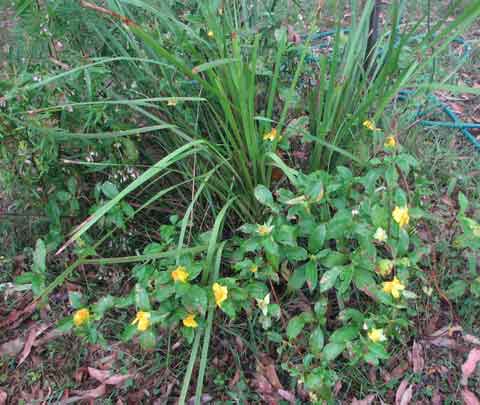 Without the need to sow or prune or feed, native plants appear, thrive and flower on my yard, where and as they choose.
Without the need to sow or prune or feed, native plants appear, thrive and flower on my yard, where and as they choose.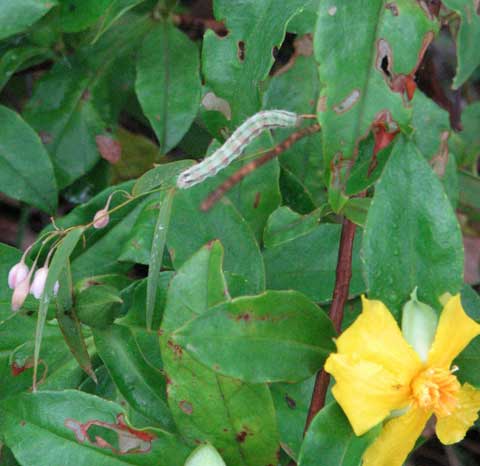 On looking closer at this little pocket of my self-sown garden, I saw it had an inhabitant – a green and pink and hairy caterpillar, which I cannot identify.
On looking closer at this little pocket of my self-sown garden, I saw it had an inhabitant – a green and pink and hairy caterpillar, which I cannot identify.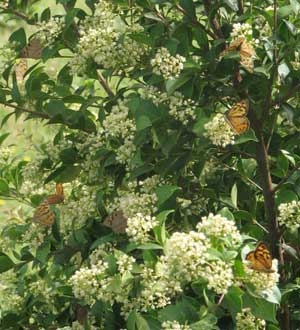 The native Brush Cherry (Szygium australe) in my garden is just opening its buds.
The native Brush Cherry (Szygium australe) in my garden is just opening its buds.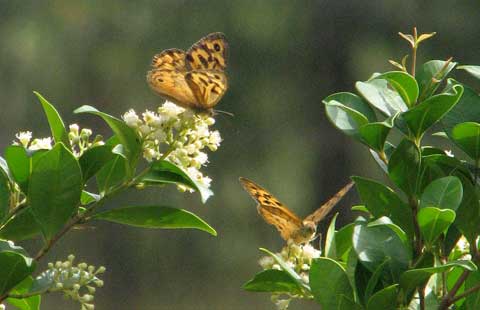 What they are (I think) is Klug’s Xenica (Geitoneura klugi klugi, a member of the Nymphalinae family, sub-family Satyrinae). If I’m right, it’s a quaint semantic coincidence, as the species of this sub-family is also known as the brush-footed butterfly.
What they are (I think) is Klug’s Xenica (Geitoneura klugi klugi, a member of the Nymphalinae family, sub-family Satyrinae). If I’m right, it’s a quaint semantic coincidence, as the species of this sub-family is also known as the brush-footed butterfly. 